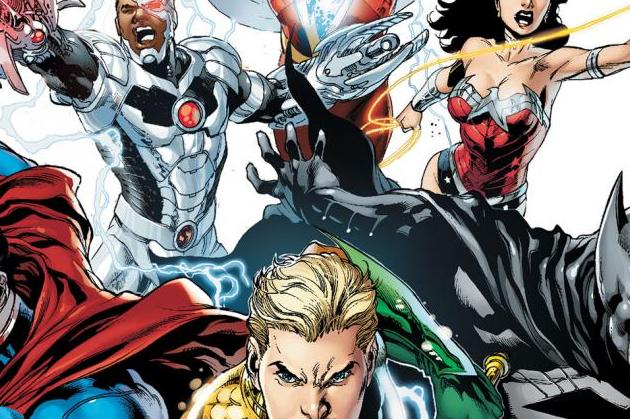Justice League #15
20,000 SPOILERS UNDER THE SEA
Here's the deal: nobody likes to rip on Aquaman anymore, because Aquaman is cool now. Now, it's about time, but did everyone collectively forget how cool Aquaman was back when he had a beard, gladiator armor and a hook for a hand?
I digress. In Justice League #15, a new story opens in which Aquaman is thrust into the spotlight. As it turns out, his brother is using the military resources of Atlantis to attack the coastal cities—as in Metropolis, Boston, Gotham City, New York—of the surface-dwellers. And, surprising nobody at all, it will take the whole Justice League to stop him!
The penciling is done by Ivan Reis, whose work is gorgeous. It's almost too gorgeous—at times overpowering the storytelling for attention. I have no problem with excellent art. I enjoy Reis' work greatly. The one thing I can't get past is the fact that every time I turn the page, I find myself saying “Ahoy, behold this marvelous picture-book!” and I lose track of the story because I'm so immersed in the art. Memorable comics have art and writing that complement each other to such a degree that the combination is seamless and airtight in its efficiency of storytelling. Writing should not distract from art, and vice versa. The problem is that Reis' art far outshines the writing, and while it captures the grandiosity of the players and theater, one's attention is drawn away from the script.
All said, Justice League #15 is alright in the writing department. Just alright. That's a wild improvement in the series' disjointed and decompressed nature in the year or so since the New 52 reboot. Still disjointed, still decompressed. However, it finally feels like perhaps Johns cares about what he's writing. Perhaps he finally cares about the characters. Perhaps he's finally done outsourcing his writing to grade-schoolers. Or wherever it is that he gets all his inane drivel.
I've discussed at length (and will again) the stylistic and structural failure of John's series when compared to legendary Leagues of the modern age of comics, like Keith Giffen's jovial Justice League International in the 80's, Grant Morrison's melodramatic and heavy-minded JLA of the 90's, and even Brad Meltzer's more self-aware, fan-oriented Justice League of America soon after the turn of the millennium.
Explanation: the fundamental flaw of John's Justice League so far is that it takes four issues at a time to tell one issue's worth of story, and that when it does, the story is ham-fisted and anticlimactic. Such flat storytelling leaves one with the same rotten taste as fan-fiction. The characters are not portrayed respectfully, rather making them bombastic puppets and caricatures on which to hang pretty-looking art. Jim Lee's art, for example, gorgeous as it is, cannot save a bad story. Neither can a cast of iconic and beloved characters. Did anyone read All-Star Batman and Robin? I rest my case.
But we have a readable issue as of #15. The story is more direct, more focused. The characters have a level of depth and relationship that was absent until now. Now, we aren't out of the woods yet. Let's be realistic: this is Geoff Johns we're talking about. It's the same writer, and a lot of the same problems and inadequacies. But somehow, it's a whole new world. In this issue, aside from the flooding of major east coast cities, something about Aquaman's brother and an invasion force from Atlantis, an important event transpires: my hope is kindled that I might actually enjoy DC's flagship title this upcoming year.
This is the first time since the end of issue #1 that I haven't been ashamed to be seen reading Justice League in public. I am hoping, if Geoff Johns must continue to write the book, that it stays at least this good.






